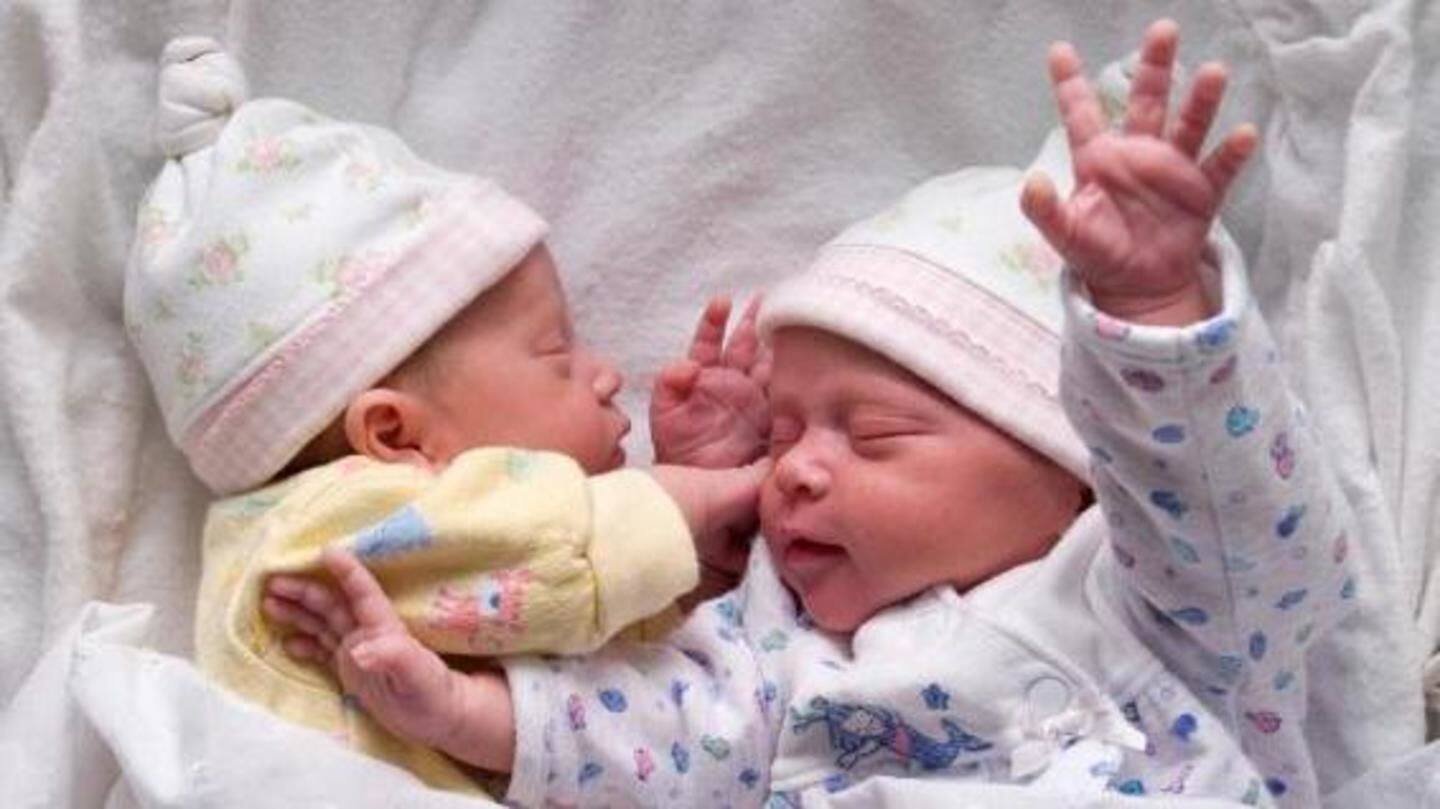
Twin-births in India have grown ten-fold, thanks to changing lifestyles
What's the story
Lifestyles in India have undergone drastic changes in the last two decades. We are now busier, want quick solutions to problems, and often forego personal lives for careers. These and other changes have led to rising infertility, and thus increasing use of alternative birthing methods. But not many would guess that these very factors are also behind a whopping 'ten-fold rise' in twin births!
Infertility
One of the most-populous nations is staring at rising infertility
Despite being one of the most populous natioons, Urban Indians are facing an opposite problem: rising infertility. According to the World Population Prospects 2017, fertility rate of Indians has fallen more than 50%, from 4.97 during 1975-80 to 2.3 in 2015-20. By 2025-30, it will hit 2.1, and 1.86 by 2045-50. Simultaneously, the assisted reproduction technology (ART) industry has grown by leaps and bounds.
ART
Indians can now choose from a variety of ART options
Indians now have several ART options, but this has had an unexpected consequence: "30-50% of all twins now occur due to infertility treatment," says Dr Narendra Malhotra, former president, ISAR. The ICMR had surprising findings too: when they assessed 113 Mumbai couples, they found 45% of pregnancies via ART resulted in twins or triplets. This is far above the natural rate of one pair per 70 births.
Explanation
Confused? Here's how that happened
In in-vitro fertilization (IVF), a popular method, ova and sperm are fused outside the body, and the embryo transferred to the womb. To increase chances of conception, couples often get multiple embryos implanted in the womb, and many times, all succeed. Another procedure called 'laser-assisted hatching' thins the embryo's outer shell to facilitate its hatching, which too increases chances of implantation and twin births.
Chemicals
Popping the pill? Think again
Then there's the factor of delayed marriage: more and more women are postponing marriage till after they settle in their career, and age of childbirth is being pushed back. To boost chances of pregnancy, many women in their mid- or late-thirties resort to hormonal drugs to increase ovulation, which often leads to higher chances of twins or triplets.
Do you know?
No time to lose!
Our generation is always looking for quick fixes, which too has unexpectedly contributed. Couples are so out of time that "if they're struggling with infertility, (and) if in a single procedure they get two children, they're happy," says Dr Nandita Palshetkar, President, Indian Association of Gynaecological Endoscopists.
Risks
But not many are aware of the risks
There are several downsides to this though, doctors say, and so IVF centers need to make sure couples are aware of all risks. For example, "most parents aren't aware of the increased risks to both mother and child in multiple pregnancies," says Dr Ameet Patki, ISAR Secretary General. Moreover, "twins are most likely to be born prematurely and suffer long-term health risks, including birth defects."
Happiness!
However, twin parents can't thank their luck enough
Despite the risks and the lack of time, most twin parents are happy with their choice. "You live through moments that you wouldn't with a single child- dressing them up alike, tackling two different baby personalities, marveling over their twin connection," Noida-based Priya Motwani, 33, tells TOI. Mumbai-based Akhilandini, 40, agrees. "I treat people's judgment and opinions as an opportunity to...offer hope to others like me."